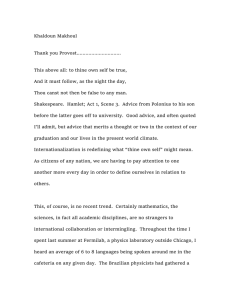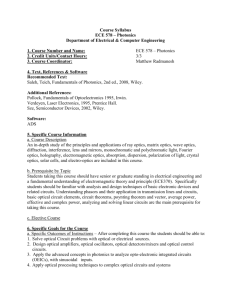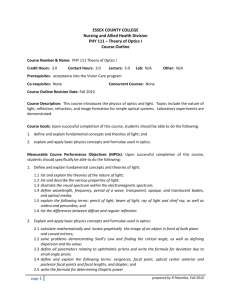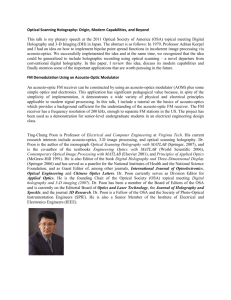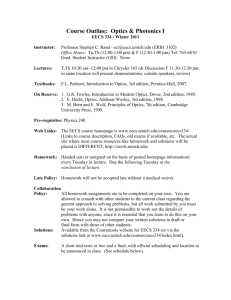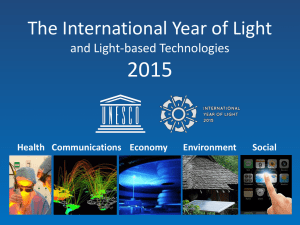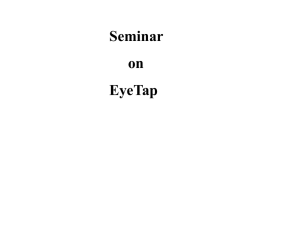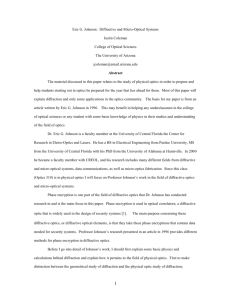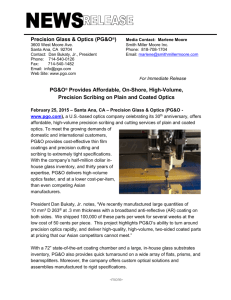Engineering Optics - Department of Electrical and Computer
advertisement
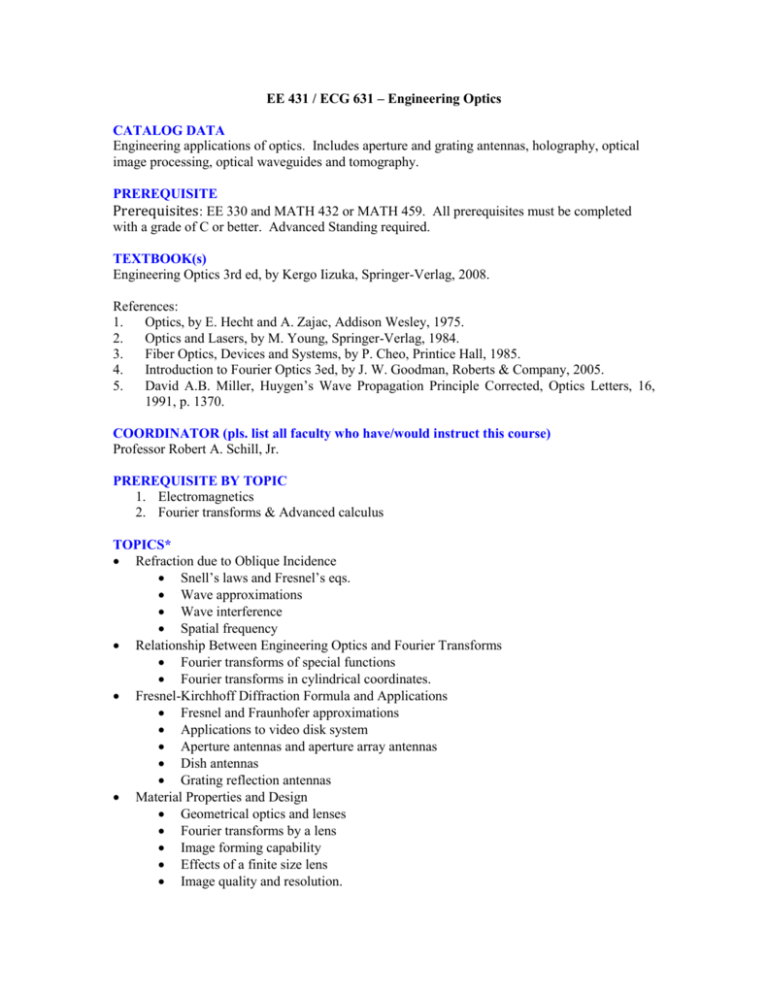
EE 431 / ECG 631 – Engineering Optics CATALOG DATA Engineering applications of optics. Includes aperture and grating antennas, holography, optical image processing, optical waveguides and tomography. PREREQUISITE Prerequisites: EE 330 and MATH 432 or MATH 459. All prerequisites must be completed with a grade of C or better. Advanced Standing required. TEXTBOOK(s) Engineering Optics 3rd ed, by Kergo Iizuka, Springer-Verlag, 2008. References: 1. Optics, by E. Hecht and A. Zajac, Addison Wesley, 1975. 2. Optics and Lasers, by M. Young, Springer-Verlag, 1984. 3. Fiber Optics, Devices and Systems, by P. Cheo, Printice Hall, 1985. 4. Introduction to Fourier Optics 3ed, by J. W. Goodman, Roberts & Company, 2005. 5. David A.B. Miller, Huygen’s Wave Propagation Principle Corrected, Optics Letters, 16, 1991, p. 1370. COORDINATOR (pls. list all faculty who have/would instruct this course) Professor Robert A. Schill, Jr. PREREQUISITE BY TOPIC 1. Electromagnetics 2. Fourier transforms & Advanced calculus TOPICS* Refraction due to Oblique Incidence Snell’s laws and Fresnel’s eqs. Wave approximations Wave interference Spatial frequency Relationship Between Engineering Optics and Fourier Transforms Fourier transforms of special functions Fourier transforms in cylindrical coordinates. Fresnel-Kirchhoff Diffraction Formula and Applications Fresnel and Fraunhofer approximations Applications to video disk system Aperture antennas and aperture array antennas Dish antennas Grating reflection antennas Material Properties and Design Geometrical optics and lenses Fourier transforms by a lens Image forming capability Effects of a finite size lens Image quality and resolution. Pictorial and Analytical (Fourier Transform) Description of Holography Wave front classification White light holography with applications Speckle pattern and applications Applications for study of: stresses and strains in materials, surface deformations, nondestructive testing, and etc. Transfer Function for Coherent Light; Spatial coherence and temporal coherence Coherent and incoherent light Transfer function of coherent light: Coherent Transfer Function (CTF) Transfer Function for Incoherent Light: Optical Transfer Function (OTF) Modulation Transfer Function (MTF) Relationship between MTF and OTF Optical Signal Processing using Coherent Light Optical Signal Processing using Incoherent Light Brief introduction to Tomography COURSE OUTCOMES (ABET course outcomes) [UULO course outcomes] Upon completion of the course, students will be able to: 1. • manipulate two dimensional Fourier transforms (1.1, 1.2, 1.3, 1.6) [2] 2. • understand the difference between the use of coherent and incoherent light (1.3, 1.6, 2.1) 3. • understand physical mechanisms behind imaging, diffraction limited, holography, and optical imaging and design (1.1, 1.2, 1.3, 1.6, 1.7, 1.8, 1.9, 1.11) [1,2,3] COMPUTER USAGE Limited usage of Matlab. GRADING Homework assigned weekly; One midterm; One final exam; Hands-on design project (s). ABET COURSE OUTCOMES 1. The appropriate technical knowledge and skills 1.1. An ability to apply mathematics through differential and integral calculus, 1.2. An ability to apply advanced mathematics such as differential equations, linear algebra, complex variables and discrete mathematics, 1.3. An ability to apply knowledge of basic sciences, 1.4. An ability to apply knowledge of computer science 1.5. An ability to apply knowledge of probability and statistics, 1.6. An ability to apply knowledge of engineering 1.7. An ability to design a system, component, or process to meet desired needs within realistic constraints 1.8. An ability to identify, formulate, and solve engineering problems 1.9. An ability to analyze and design complex electrical and electronic devices 1.10. An ability to use the techniques, skills, and modern engineering tools necessary for engineering practice. 1.11. An ability to design and conduct experiments, as well as to analyze and interpret data 2. The appropriate interpersonal skills 2.1. An ability to communicate effectively 2.2. An ability to function on multidisciplinary teams 3. The knowledge and skills to be responsible citizens 3.1. An understanding of professional and ethical responsibility 3.2. The broad education necessary to understand the impact of engineering solutions in a global, economic, environmental, and societal context 3.3. A recognition of the need for, and an ability to engage in life-long learning 3.4. A knowledge of contemporary issues 3.5. A knowledge of the basic content and concepts of the U.S. and Nevada constitutions UULO COURSE OUTCOMES 1. Intellectual Breadth and Lifelong Learning 2. Inquiry and Critical Thinking 3. Communication 4. Global/Multicultural Knowledge and Awareness 5. Citizenship and Ethics COURSE PREPARER AND DATE OF PREPARATION Robert A. Schill, Jr., Last update date December 9, 2014

